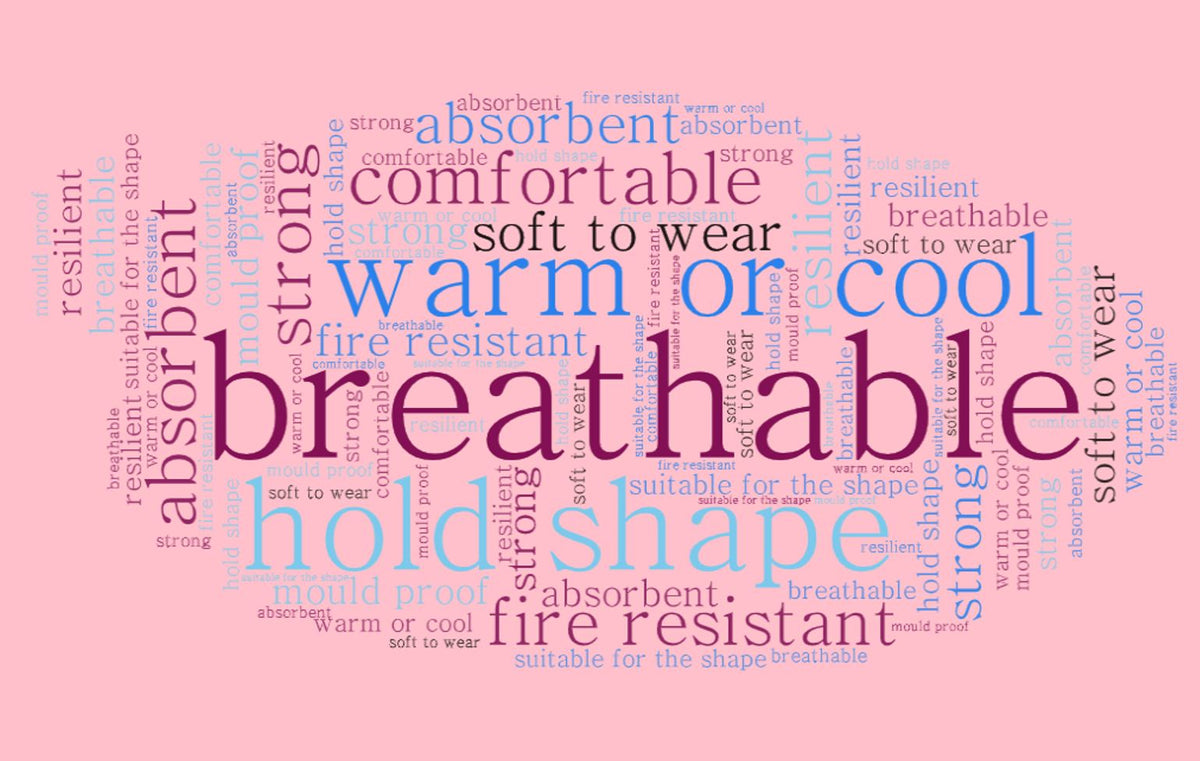What are clothes really made from?

Welcome back to the wonderful world of fabrics. In one of our earlier blogs we looked at the difference between knit and woven fabrics and how this influences the way garments feel and the choices made by the designer.
Fabrics are just part of the story and to get a full picture we need to go to their source. Fabrics are made of yarns of varying size and texture which are put together in interesting ways to make fabric. When it comes to your favourite clothes it’s not just the look of the fabric but how the garment feels and performs and this mostly comes down to the fibre used to make the fabric.
Fibres are grouped into three categories
- Natural - animal, vegetable or mineral
- Man - made - natural fibres that are physically or chemically changed
- Synthetic - fibres made completely from chemicals
Because all fibres have different plus and minus qualities many fabrics are made from a blend of fibres to get the best of both worlds and minimise the down sides. Let’s have a look at how these fibres will perform.
Natural Fibres
Remember the guessing game when the first question was “animal, vegetable or mineral ’ well this is the starting point for figuring out natural fibres.
- Animal - Wool, Alpaca, Mohair, Cashmere, Angora and Silk [ from silkworms]
- Vegetable - Linen - from flax plants, Cotton, Jute, Sisal, Hemp
- Mineral - Metals, asbestos, and glass
Manmade Fibres
Fibres are regenerated or modified physically or chemically
Bamboo, [Viscose -Europe, Rayon – USA] – these are from the spruce tree and other plants
Tencel, Acetate and Cupro
Synthetic Fibres
Nylon [Polyamide], Polyester, Acrylic, Elastane – made completely from chemicals, Polypropylene
As a rule, natural fibres are more expensive because they are not as readily available.
All fibres have plus and minus properties, but I think we can all agree we want our clothes to be …
Like people no fibre is perfect so that’s why many fibres are blended together to maximise performance of the garment and suitability for the style.
Understanding your clothes, a little better will increase your enjoyment of your wardrobe.
|
Fibre
|
Positives |
Negatives
|
|
COTTON |
Strong, especially when wet, Durable, and absorbent. Cool to wear, able to have a variety of textures. Sustainable and decomposes |
Can fade if left in sun, can shrink if not laundered properly. Creases, not warm to wear
|
|
SILK |
Can be used to create fine light weight garments. Absorbs moisture so is comfortable to wear. Warm, luxurious Decomposes |
Creases Can fade and rot Not very strong
|
|
LINEN |
Strong, absorbent, durable Cool to wear Luxury fibre – softens with age and wear Sustainable and decomposes |
Can fade Creases Can shrink if not laundered properly
|
|
BAMBOO |
Breathable Anti-fungal Anti-bacterial Sustainable and decomposes |
Heavy when wet Can shrink if not laundered correctly Wrinkles and creases |
|
VISCOSE/RAYON |
Fine to heavy weight garments Lustrous - shiny Soft Highly absorbent |
Can fade Weak fibre Shrinks if not laundered correctly Not warm to wear
|
|
WOOL |
Degrades in light Stretchy Flame retardant Dirt repellent Anti-static Drapes well Doesn’t crease Warm |
Can pull out of shape when in a lightweight fabric Prone to damage from moths and mildew
|
|
ACRYLIC
|
Won’t fade Non absorbent Strong Stable |
Can be prone to pilling - rubbing Not sustainable
|
|
NYLON
|
Light Strong Abrasion resistant Stable Adds strength to other fibres |
Weakens over time Doesn’t breathe Not sustainable |
|
POLYESTER
|
Stretchy Flexible Durable Resistant to abrasion Light fast Good wrinkle recovery |
Non-absorbent or breathable Prone to sweating Doesn’t decompose readily |
|
POLYPROPYLENE
|
Colour fast Fast drying Stain and soil resistant Strong |
Petro-chemical by product Not sustainable Can be sweaty |
|
MICROFIBRE
|
Very fine strands Soft Hold shape Not very absorbent |
Doesn’t breathe
|
Like people no fibre is perfect so that’s why many fibres are blended together to maximise performance of the garment and suitability for the style.
Understanding your clothes, a little better will increase your enjoyment of your wardrobe.